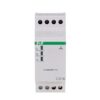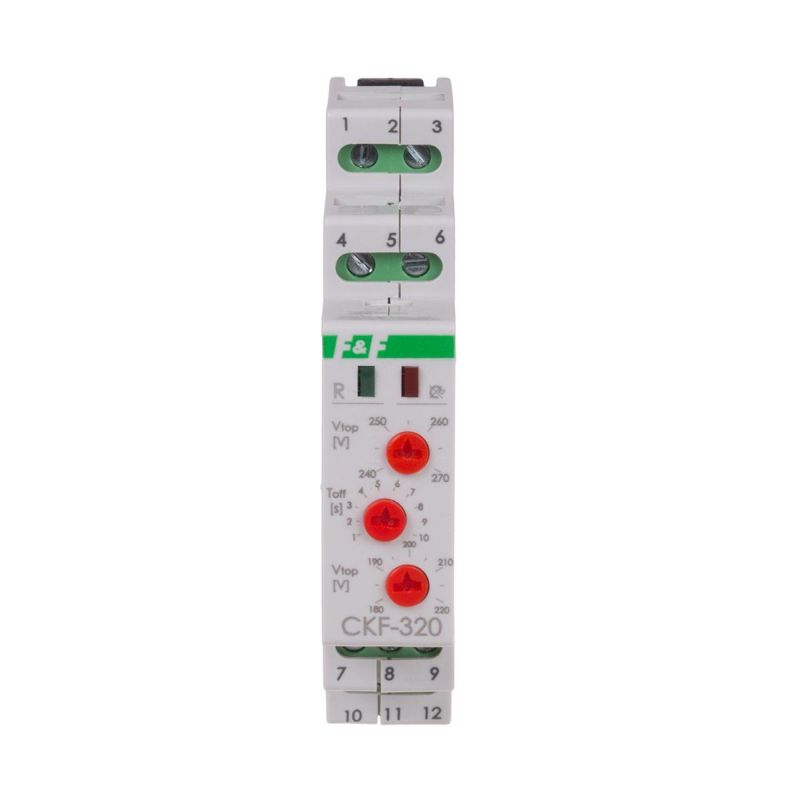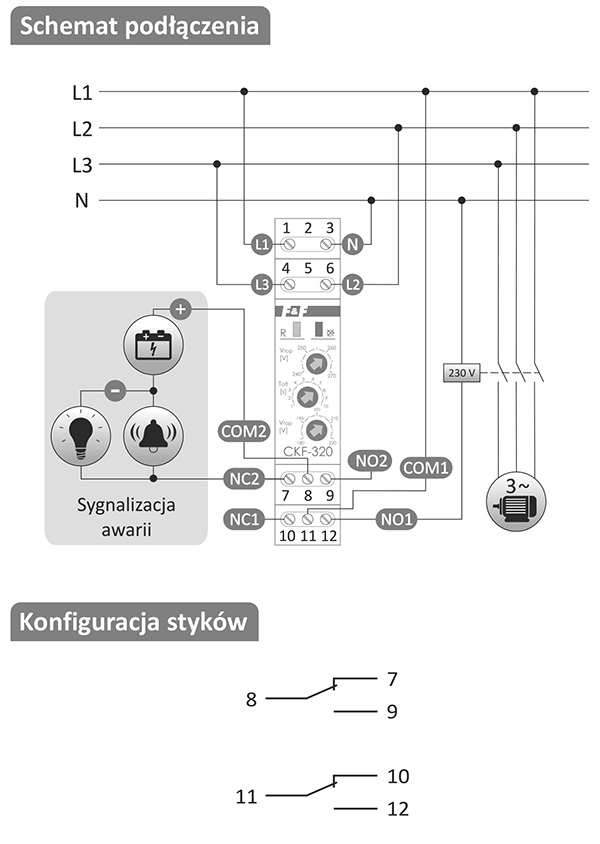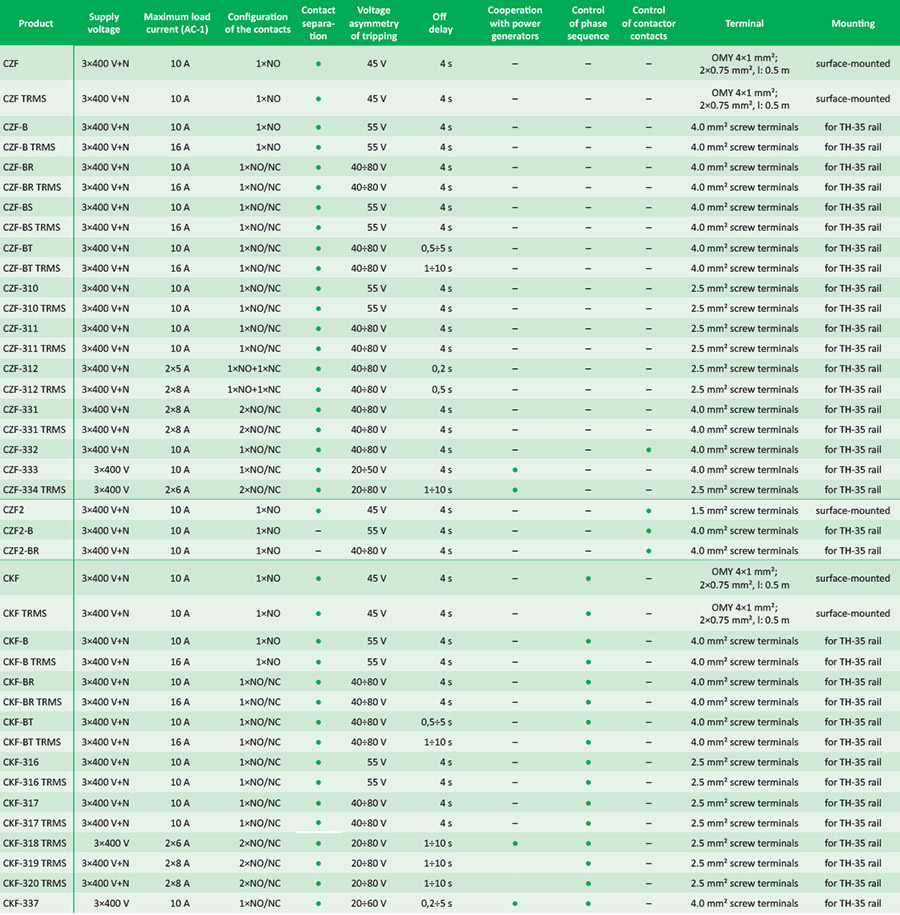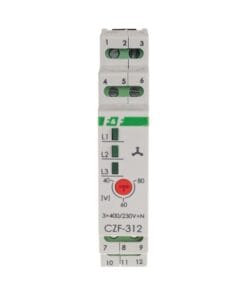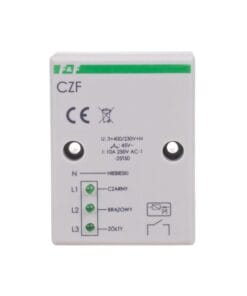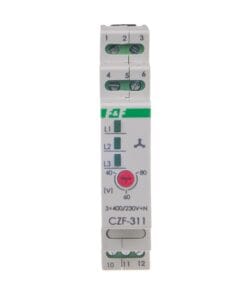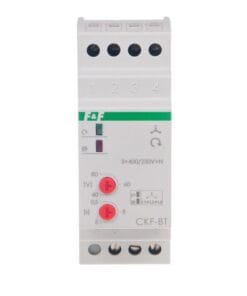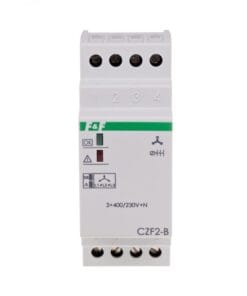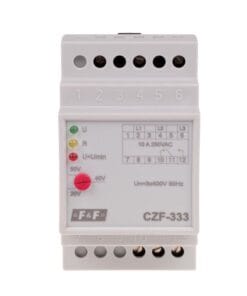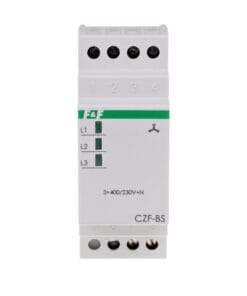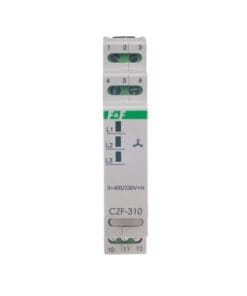The sequence and phase loss sensor is designed to protect an electric motor supplied from a three-phase network in the cases of:
– power failure in at least one phase;
– voltage drop in at least one phase below 150 V;
– voltage increase in at least one phase above 280 V;
– voltage unbalance between phases above the set value;
– incorrect phase sequence.
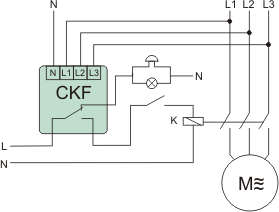
Functioning
The correct supply voltage is indicated by the green LED diode. Voltage drop below 150 V or increase above 280 V on at least one, any phase, or voltage asymmetry above the set value is signaled by the green diode not lighting.
Both of the above anomalies (exceeding the voltage threshold, asymmetry) cause the device relay to turn off and, as a result, disconnect the motor.
In the case of asymmetry, disconnection is carried out with a set delay to avoid accidental shutdowns for temporary disturbances in the network.
In the event of a voltage drop below 150 V or an increase above 280 V, the disconnection is carried out after 1 s. The countdown to switching off is signaled by the flashing green diode.
The relay is switched on again automatically when the correct network parameters return (voltage hysteresis is about 5 V).
If the phase sequence in front of the sensor changes, causing the motor to rotate inadvertently, the sensor will not allow the motor to start (the red LED is on and the relay is off). Reconnection is possible after the correct phase sequence has been returned.
In case of incorrect connection of the input wires (phase in the place of the neutral wire), the LEDs flash in the order red, green indicating a connection error (in this case the output relay will not be turned on).


